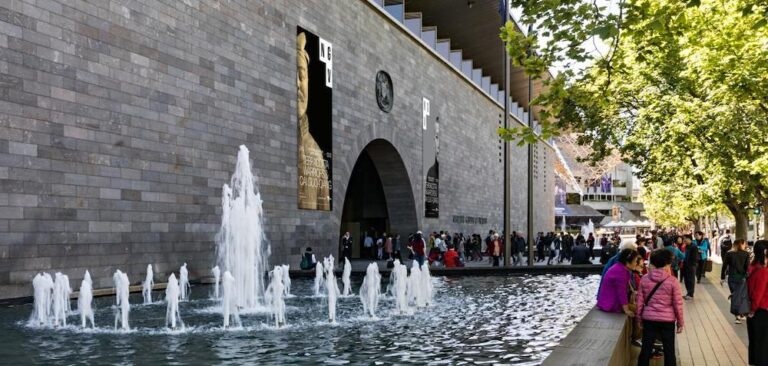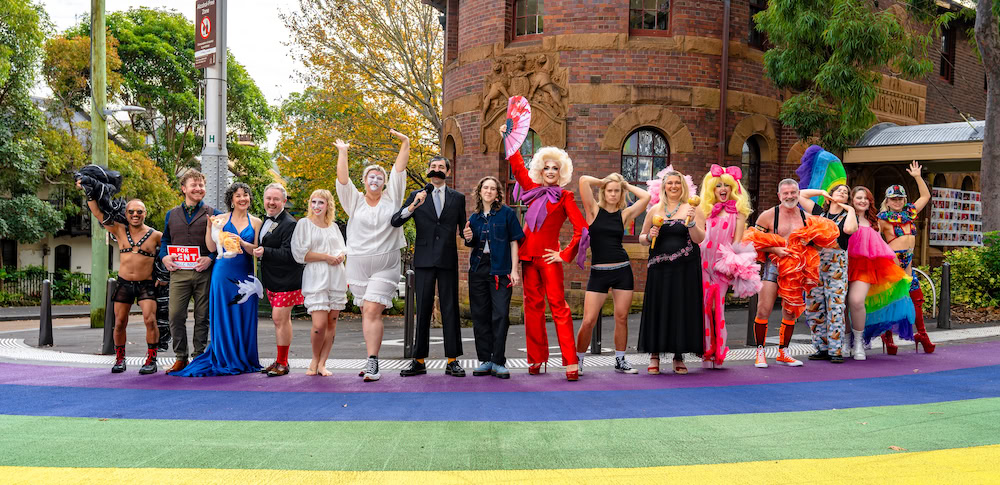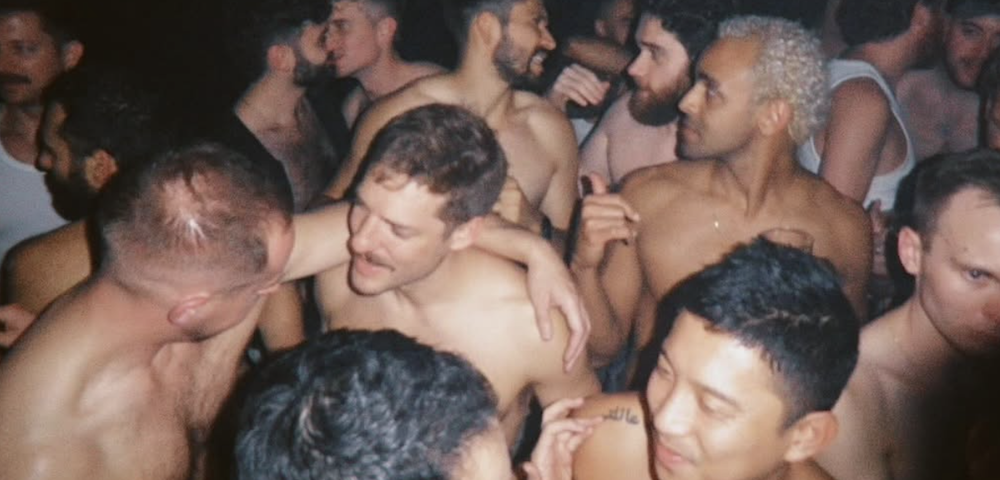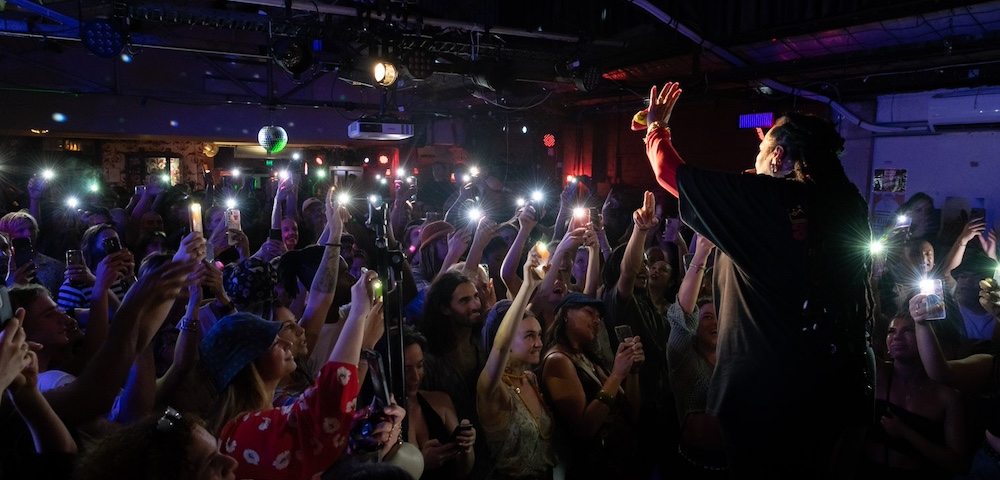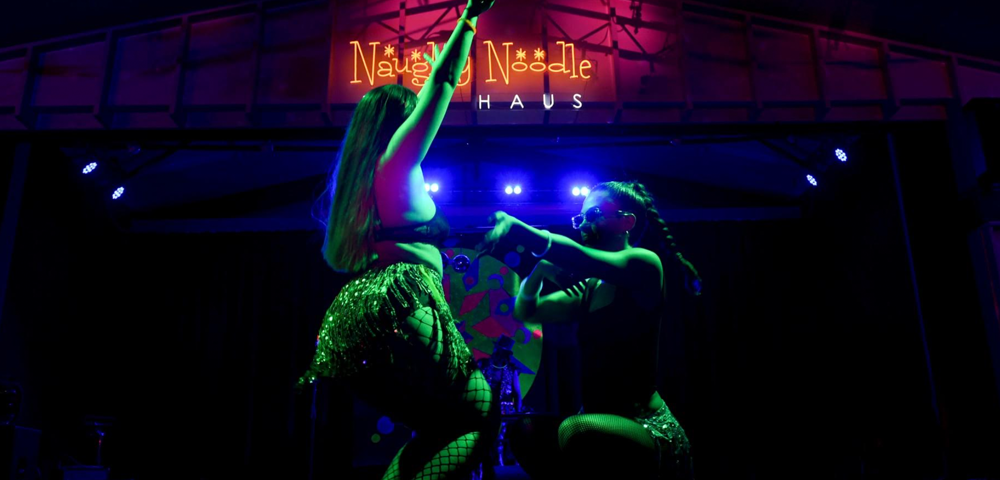
The second coming of New Mardi Gras
New Mardi Gras co-chair Michael Woodhouse is known for his anecdotes, and he tells a funny one about a night in November 2002, when he took to the stage at the Imperial Hotel and shamelessly begged punters for money. The situation was critical: New Mardi Gras was obliged to make a $150,000 payment to the administrators of the old Mardi Gras organisation before they could proceed with any events in 2003. With voice-quavering passion, Woodhouse implored patrons to dig deep, telling them, We won’t have a Mardi Gras unless we get your support now!
The speech struck a nerve. Punters who might otherwise baulk at tossing in a gold coin responded with $50 notes.
It was that kind of response -“ generosity in the face of a crisis -“ that helped save Mardi Gras in 2002/2003. But as Woodhouse grimly notes, the task for New Mardi Gras now is even tougher.
Sustainability is actually harder than survival, he contends. It takes a lot longer to rebuild an organisation like Mardi Gras than it did for it to fall down. It’s going to be four or five years of long hard slog to get this organisation financially secure. We’re going to continue to need to go on the smell of an oily rag until that’s there. Can we press the crisis button every year? Well, probably not. But we’ve got to remember as an organisation and as a community that Mardi Gras is still really vulnerable. It’s really conditional on people getting involved and being behind it.
There are other factors making the task of staging a 2004 season even more tricky. Services donated for free this year -“ up to and including the DJs who played at the party for nothing -“ will likely come with a price tag in 2004. At the same time, the market for dance parties remains uncertain and the market for corporate sponsorships has become even tighter. One major sponsor of the 2003 season, Volvo, will not return in 2004, while another major sponsor, South Sydney Council, is not in a position to offer as much support this year as it is now a significantly smaller entity. (It is not yet known whether the City of Sydney will step in to bridge the funding gap.)
One other factor which remains untested is the amount of community goodwill towards New Mardi Gras. The 2004 season features over 100 events -“ reflective of longer lead-times than the hastily-put-together 2003 season, but also, perhaps, of a greater sense of community confidence in the organisation.
But for other community members, the New Mardi Gras honeymoon is definitely over. Some volunteers have withdrawn; some suppliers feel badly treated by the organisation and have vowed not to work with them again; some community members have been angered by decisions made by the board.
No organisation can be expected to please everybody all of the time, but long-time Mardi Gras member Larry Galbraith lauds New Mardi Gras for the flexibility they have shown to date.
Early on in the piece, New Mardi Gras revealed its willingness to listen to the community, over the disastrous decision regarding the naming of the parade, Galbraith says. The process they adopted demonstrated very clearly a significant break with the past.
Former Mardi Gras board member Jennifer Wilson concurs.
They’ve proven themselves to be a much more nimble organisation than old Mardi Gras, and that’s a good thing, she says. In comparison, old Mardi Gras was a juggernaut and difficult to turn when a bad decision needed correcting, she says.
Despite never serving a term as president of the old Mardi Gras, Wilson knows as well as anybody how fiery the Mardi Gras hot seat could get. She notes a softening in the level of blood-sport and baiting that used to characterise relations between the community on the one hand and the board and staff on the other.
Wilson believes that the collapse of the old Mardi Gras surprised many community members who had otherwise believed it to be immortal, unbreakable and unstoppable.
It indicated a level of fragility that no-one was aware of, she suggests. The surprise about this made people realise that an antagonistic relationship to Mardi Gras was not good for the organisation, she says.
Wilson agrees that a culture of arrogance had developed in the old Mardi Gras organisation. She argues that New Mardi Gras shows much more humility than the old organisation, but warns against a few traces of arrogance displayed by the new group.
New Mardi Gras have refused to learn some of the lessons of history, she says. When offers of assistance were made by people connected to old Mardi Gras, they were very clearly pushed away.
Others see positives in this. Former president (and trenchant critic of the last board of the old Mardi Gras), Richard Cobden, notes that New Mardi Gras have not had to carry the baggage of the Hall of Fame. The Hall of Famers -“ comprising ex-presidents and long-standing supporters of the organisation -“ could be among the most vocal critics of old Mardi Gras, as they arguably had the most passionately held ideas about the kinds of things the organisation should do.
Larry Galbraith believes the collapse of old Mardi Gras enabled a generational change in its management and culture. Leaders like Michael Woodhouse and Steph Sands, both aged in their 30s, have brought new energy and experience and expertise to the organisation, he says.
But the comparative youth of the new board has not stopped the organisation from being criticised for failing to engage with younger people -“ particularly in the debate over the much-criticised poster for Sleaze Ball.
Opinions may have been divided on the actual poster, but the worth of the debate about the poster was also questioned. Some saw the debate as a triviality, or a throwback to a time when Mardi Gras’ every move was questioned and analysed by a community that clearly had nothing better to do with its time; others saw the Sleaze poster debate as a telling sign of how the new organisation balanced its roles as a community and commercial organisation. The concern was that the board of New Mardi Gras was too focused on the politics of community representation and not focused enough on ensuring tickets got sold to the event. Sources for this story suggested the debate over the poster split the board roughly down gender lines, but in the end, pragmatism won out and new posters for the event were produced.
Pride co-president Lou-Anne Lind says the original Sleaze Ball poster was reflective of the new organisation’s more inclusive philosophy, as well as an earnest response to many years of complaints from sectors of the community that nobody but buff boys and young party dykes ever got represented in Mardi Gras promotional material. The spat over the poster was reflective, she says, of a community that doesn’t really know what it wants.
But, she adds, the community has changed along with the Mardi Gras organisation.
Old Mardi Gras was the organisation we all loved to bitch about, but people now understand that we lost the organisation partly because of that, she says. There is a changed dialogue. There is a more tempered approach coming through. It’s not the gay government, at the end of the day.
With that realisation in place, the New Mardi Gras board is continuing to work on planning the 2004 festival, parade and party.
Woodhouse and Sands appear undaunted but already tired -“ if that contradiction is even possible -“ by the enormity of the task ahead of them.
The amount of work involved in getting all these events on and running and delivering a product hasn’t changed from the old organisation, Sands says. Instead, now we have two staff instead of 30, and 10 board members and some fantastic volunteers. We go to work and do our jobs during the day, go to a meeting at night and then have four or five hours before going to bed where we can do some work and make some things happen.
The reality of this year was always going to be that in some ways it’s financially harder, Woodhouse says. We had a hell of a lot of free stuff this year. People donated services that next year we will have to pay for, so in that sense we need more revenue. We’re also carrying a whole lot of one-off costs: we’ve still got payments to make under the Deed of Company Arrangement and some particular payments about getting into the new premises. This was always going to be a pretty tight financial year.
Given the amazing success of New Mardi Gras in 2003, it seems unthinkable that the organisation could run into difficulty in 2004, but Sands and Woodhouse both stress that the organisation remains a fledgling.
Jennifer Wilson uses a similarly ornithological metaphor to describe the position of New Mardi Gras as it heads into its second season.
New Mardi Gras was the phoenix that rose from the ashes of old Mardi Gras, she says. It’s now trying to step into its boots and not fall flat on its face. Like all phoenixes, it now has to learn how to fly.
NEW MARDI GRAS: THE STORY SO FAR
11 September 2002
The board of New Mardi Gras -“ formed from a coalition of ACON, Pride, Queer Screen and the Gay and Lesbian Rights Lobby -“ announces that they will register as a company in order to stage a Mardi Gras parade and party on 1 March 2003. Stevie Clayton and Michael Woodhouse are announced as co-chairs of the new organisation.
30 September
Creditors of Sydney Gay + Lesbian Mardi Gras vote in favour of a Deed of Company Arrangement which will see New Mardi Gras pay $349,000 for the assets of the old company in staggered payments. First payment of $150,000 is due on 28 October.
5 October
After months of speculation, Pride stages a successful Sleaze Ball on behalf of Mardi Gras, selling over 6,000 tickets.
23 October
South Sydney Council votes in favour of a one-off cash grant to New Mardi Gras of $45,000. The deadline for the first payment to be made under the Deed of Company Arrangement is pushed back to 18 November.
18 November
New Mardi Gras makes its first (and largest) payment to the administrators: $150,000. The money includes $45,000 from South Sydney Council, $30,000 from a Gaydar.com sponsorship, $25,000 from the organisers of the Harbour Party, $10,000 from a Cabaret fundraiser, $10,000 from an Arq nightclub fundraiser and around $30,000 in individual donations.
5 December
Sydney 2002 Gay Games enters administration with debts of around $2 million, while New Mardi Gras releases details of events for the 2003 umbrella festival.
12 December
The board announces that the words gay and lesbian will be dropped from the Mardi Gras parade.
6 January 2003
After community outcry, New Mardi Gras reverses its decision regarding the name of the parade.
10 January
Tickets go on sale for the Mardi Gras party. For the first time in many years, the cost of a ticket is cut -“ to $95.
24 January
Festival Guide for the 2003 Mardi Gras season is released.
7 February
A hastily arranged season launch draws an estimated 10,000 people to Hyde Park North. Stevie Clayton tells the crowd: Last year was the year of corporate collapse in Australia with the fall of our largest insurance company HIH and the loss of a national icon in Ansett airlines. Of all of these, Sydney Gay and Lesbian Mardi Gras has been the only one to bounce back, and this is a tribute to the love, dedication and sheer determination of our community.
16 February
Fair Day is hailed a success, despite a programming clash with an anti-war demonstration which kept numbers somewhat down.
1 March
The 25th annual Mardi Gras parade, featuring 140 floats, goes off without a hitch, while the party sells out all 17,000 tickets. If the parade is what we do for the world, then the party is what we do for ourselves, a Speedo-clad Michael Woodhouse tells revellers in the Royal Hall of Industries shortly after the opening show.
20 March
The Mardi Gras parade becomes recognised as a Hallmark Event, exempting it from paying police, ambulance and Roads and Traffic Authority fees in future years.
27 March
After the lease on their Erskineville premises expires, New Mardi Gras moves in with the Sydney Pride Centre. A merger between the two organisations is canvassed, but described as a fairly long-term option by Pride co-president Lou-Anne Lind.
5 April
New Mardi Gras adopts its constitution and opens itself as a member organisation. Previous membership regulations which acted as a barrier to bisexual and heterosexual people joining the organisation are removed.
10 April
New Mardi Gras learns that the Fox Studios site has been booked for the October long weekend (the traditional date for Sleaze Ball) by the promoters of the Livid music festival.
17 April
The promoters of the Livid Festival offer to move the date of their Sydney event, enabling New Mardi Gras to stage Sleaze Ball on the October long weekend.
10 May
New Mardi Gras’ inaugural general meeting sees the election of a new board. Stevie Clayton steps down as co-chair; Michael Woodhouse and Steph Sands are elected as co-chairs at a board meeting on 3 June.
3 July
The westward march continues. New Mardi Gras moves into new premises on Trafalgar Street, Petersham.
14 August
New Mardi Gras releases the theme and poster for Sleaze Ball.
13 September
Andrew Refshauge, Tanya Plibersek, Clover Moore and the Dykes on Bikes help to officially open Mardi Gras’ new premises in Petersham.
25 September
Concerned about sluggish ticket sales for Sleaze Ball and stung by criticism that the marketing for the event looks cheap and uninspiring, New Mardi Gras launches a sexy, re-vamped campaign for the party.
4 October
Almost 10,000 people come together for the first Sleaze Ball to be staged by New Mardi Gras. Organisers claim a success, but later admit the party generated only a modest profit for the organisation.
1 November
At its annual general meeting, New Mardi Gras announces that it ended the financial year with almost $500,000 in the bank. A proposal to enable two-year terms for board members is narrowly defeated in a vote.



